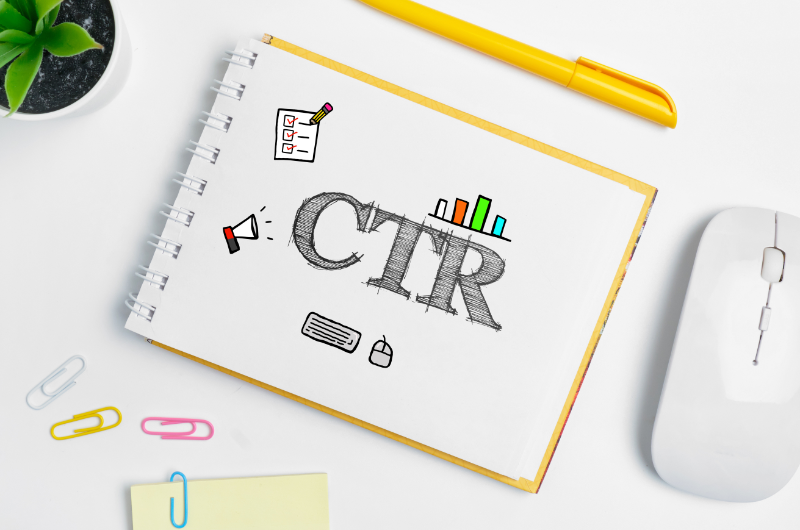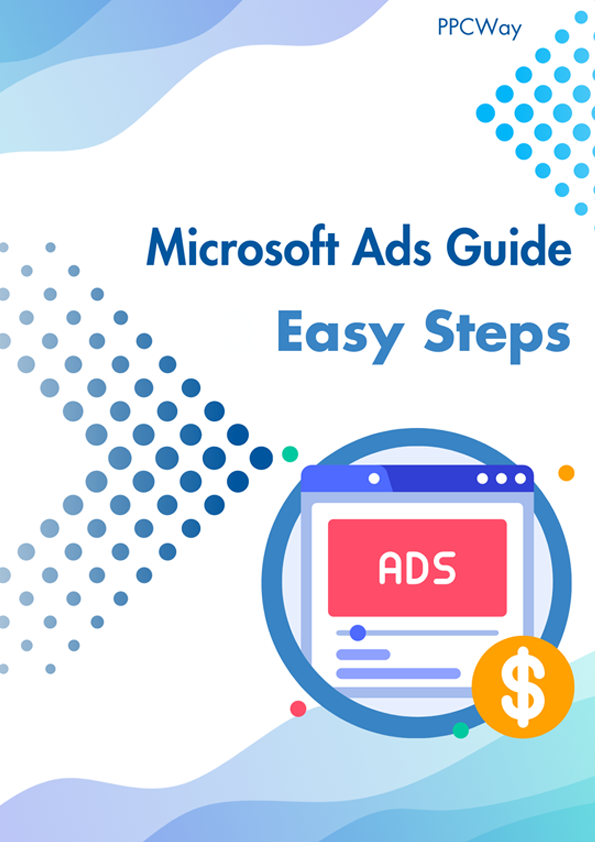Introduction: Understanding Microsoft Responsive Search Ads (RSAs)
Microsoft Responsive Search Ads (RSAs) are a powerful advertising tool designed to enhance the effectiveness and efficiency of search engine marketing campaigns on the Microsoft Advertising platform.
Similar to Google's Responsive Search Ads, Microsoft RSAs dynamically adjust ad components to create personalized ads tailored to the user's search query and context.
This approach helps advertisers deliver more relevant and engaging ads, ultimately improving their campaign performance.
The concept behind Microsoft RSAs is to create a single ad that can adapt and optimize itself to different search queries and user preferences.
Instead of relying on a single static ad, RSAs utilize a combination of headlines and descriptions that can be rearranged and combined in various ways.
This flexibility allows the system to select the most relevant combination of ad components for each specific search query.
To set up Microsoft RSAs, advertisers provide multiple headlines and descriptions that are relevant to their products or services.
The system automatically combines these components to create various ad variations. It uses machine learning algorithms to determine the best-performing combinations based on historical performance data, user behavior, and contextual factors.
One of the key benefits of Microsoft RSAs is their ability to increase ad coverage and visibility. With traditional ads, advertisers are limited to a fixed set of headlines and descriptions, which may not always match every user's search query. RSAs, on the other hand, allow for more dynamic and diverse ad variations, increasing the chances of appearing in relevant search results.
Another advantage of RSAs is their ability to optimize ad performance over time.
As the system gathers data on user engagement and conversion rates, it automatically adjusts the ad combinations to prioritize those that generate better results.
This continuous optimization helps advertisers maximize their return on ad spend and improve campaign efficiency.
When creating RSAs, it's essential to follow some best practices to maximize their effectiveness.
Advertisers should provide a range of diverse and relevant headlines and descriptions to increase the chances of generating compelling ad variations.
It's also recommended to include a clear call-to-action and highlight unique selling points to attract users' attention.
Regular monitoring and optimization are crucial for maintaining successful RSA campaigns. Advertisers should review performance data, identify underperforming ad components, and make necessary adjustments.
Additionally, testing different variations and experimenting with new headlines and descriptions can help discover winning combinations that drive higher engagement and conversions.
In conclusion, Microsoft Responsive Search Ads offer a valuable opportunity for advertisers to deliver more personalized and effective ads on the Microsoft Advertising platform.
By utilizing machine learning algorithms to dynamically optimize ad components, RSAs help improve ad coverage, increase engagement, and drive better campaign results.
With careful planning, monitoring, and optimization, advertisers can leverage the power of RSAs to enhance their search engine marketing efforts and reach their target audience more effectively.

The Benefits of Using Microsoft Responsive Search Ads
Microsoft Responsive Search Ads (RSAs) offer several benefits for advertisers looking to enhance their search engine marketing campaigns on the Microsoft Advertising platform. Here are some key advantages of using Microsoft RSAs:
- Improved ad performance and click-through rates (CTRs)
- Increased ad relevance and user engagement
- Enhanced ad personalization for targeted audiences
- Dynamic adaptation of ad components to match user intent
- Automated ad rotation and optimization for better results

- Streamlined campaign management and efficiency
- Continuous testing and optimization capabilities
- Improved audience targeting and segmentation
- Enhanced user experience and satisfaction
- Higher conversion rates and campaign effectiveness
Enhanced Ad Performance with Dynamic Headlines and Descriptions
Enhanced ad performance is a primary goal for advertisers, and one effective way to achieve it is by utilizing dynamic headlines and descriptions in their ads.
Dynamic ad components, such as headlines and descriptions, offer several advantages that contribute to improved ad performance. Here are some key benefits of using dynamic headlines and descriptions:
1. Relevance to User Intent: Dynamic ad components allow advertisers to align their ads more closely with the user's search intent.
By dynamically inserting keywords from the user's search query into the ad copy, advertisers can create highly relevant ads that resonate with the user's needs. This relevancy increases the chances of capturing the user's attention and driving engagement.
2. Increased Click-Through Rates (CTRs): When ads are tailored to match the user's search query, they tend to attract more clicks.
Dynamic headlines and descriptions enable advertisers to address specific keywords, highlight relevant benefits, or provide tailored offers in their ad copy.
This increased relevance and specificity make the ad more enticing, resulting in higher CTRs.
3. Improved Ad Quality and Ad Rank: Dynamic ad components contribute to higher ad quality, which is an essential factor in determining ad rank and ad position.
When an ad is deemed highly relevant to the user's search query, search engines like Microsoft Advertising assign a higher ad quality score.
This, in turn, can lead to improved ad rankings and greater visibility in search results and lower click price.
4. Tailoring to Audience Segments: Dynamic ad components also allow advertisers to tailor their messaging to specific audience segments.
By leveraging data such as demographics, location, or device information, advertisers can create customized ad variations that resonate with different audience groups.
This personalized approach enhances the ad's effectiveness and helps drive better performance.
5. A/B Testing and Optimization: Dynamic headlines and descriptions provide an opportunity for advertisers to conduct A/B testing and optimization.
By creating different variations of ad copy and monitoring their performance, advertisers can identify the most effective combinations.
Through continuous testing and optimization, advertisers can refine their messaging, improve engagement rates, and maximize campaign performance.
6. Adaptability to Ad Extensions: Dynamic ad components can seamlessly integrate with ad extensions, further enhancing ad performance.
Ad extensions like sitelinks, callouts, or structured snippets provide additional information and options to users, making the ad more comprehensive and compelling.
By combining dynamic ad components with relevant ad extensions, advertisers can create highly informative and engaging ads that drive better results.
7. Quick and Efficient Updates: Dynamic ad components enable advertisers to make quick updates to their ads without creating entirely new ad variations.
For example, if there are changes in promotions, pricing, or offers, advertisers can easily update the relevant portions of the ad copy.
This flexibility ensures that the ads remain up-to-date and aligned with the advertiser's marketing strategies.

Improved Ad Personalization for Targeted Audiences
Improved ad personalization for targeted audiences is a key objective for advertisers aiming to deliver highly relevant and engaging ads.
By tailoring ad content to match the preferences, demographics, behaviors, and interests of specific audience segments, advertisers can significantly improve ad performance and campaign effectiveness.
Here are some ways in which improved ad personalization benefits targeted audiences:
1. Relevant Messaging: Personalized ads allow advertisers to speak directly to the specific needs and interests of their target audience.
By analyzing audience data, such as search history, demographics, and past interactions, advertisers can create ad content that resonates with the individual's preferences.
This relevance increases the likelihood of capturing the audience's attention and generating engagement.
2. Customized Offers and Promotions: Ad personalization enables advertisers to provide tailored offers and promotions based on the audience's characteristics and behaviors.
By understanding the audience's preferences, advertisers can craft compelling and targeted offers that align with their needs.
This customization helps create a sense of exclusivity and increases the likelihood of attracting the audience's interest and driving conversions.
3. Segment-Specific Messaging: Ad personalization allows advertisers to create variations of ad content that target specific audience segments.
By segmenting the audience based on factors such as demographics, location, or purchasing behavior, advertisers can deliver ads that speak directly to the unique characteristics and preferences of each segment.
This segmentation enables advertisers to craft more impactful messaging that resonates with specific subsets of their target audience.
4. Dynamic Ad Components: Dynamic ad components, such as headlines, descriptions, and images, enable advertisers to create personalized ads that adapt to the individual's context.
By leveraging data such as search queries, browsing history, or location, advertisers can dynamically insert relevant content that aligns with the audience's specific needs.
This personalization creates a more tailored and engaging ad experience, increasing the likelihood of capturing the audience's attention and driving action.
5. Localization and Contextual Relevance: Improved ad personalization allows advertisers to deliver localized and contextually relevant ads to targeted audiences.
By leveraging location data and contextual cues, advertisers can create ads that speak directly to the audience's local environment, events, or specific situations.
This localization and contextual relevance enhance the ad's impact and relevance, increasing the chances of driving engagement and conversions.
6. Retargeting and Remarketing: Ad personalization enables advertisers to effectively retarget and remarket to previous website visitors or customers.
By analyzing user behavior and interaction history, advertisers can deliver personalized ads that showcase relevant products, recommendations, or reminders.
This tailored approach keeps the brand top of mind and encourages users to re-engage or convert.
7. Performance Optimization: Ad personalization also benefits targeted audiences through continuous performance optimization.
By analyzing ad performance metrics, such as click-through rates (CTRs), conversion rates, or engagement levels, advertisers can identify patterns and insights that drive better results.

Increased Click-Through Rates through Automated Optimization
Increasing click-through rates (CTRs) is a common goal for advertisers, and automated optimization can be a powerful tool to achieve this objective.
By leveraging automated optimization techniques, advertisers can continuously improve their campaigns and maximize CTRs.
Here are some strategies to increase CTRs through automated optimization:
- Automated ad rotation to test and prioritize high-performing ad variations
- Responsive Search Ads (RSAs) that dynamically optimize ad components for relevance
- Automated ad scheduling to show ads during peak user engagement times
- Predictive bidding algorithms to adjust bids in real-time for optimal ad placement
- AI-powered audience targeting to reach the most relevant audience segments
- Utilizing ad extensions to enhance visibility and attract user attention
- Continuous monitoring of performance metrics to identify areas for improvement
- Dynamic ad delivery based on user behavior and preferences
- A/B testing automated to experiment with different ad variations for maximum CTRs
- Leveraging data-driven insights to refine targeting strategies and messaging.

Higher Conversion Rates with AI-driven Ad Delivery
To achieve higher conversion rates, leveraging AI-driven ad delivery can be a powerful strategy.
AI algorithms can analyze large amounts of data and make real-time optimizations to deliver ads to the right audience at the right time.
Here are some ways to leverage AI-driven ad delivery for higher conversion rates:
1. Audience Targeting: Use AI algorithms to analyze audience data and identify the most relevant segments for your ads.
AI can consider various factors such as demographics, interests, browsing behavior, and purchase history to target users who are more likely to convert.
By reaching the right audience with personalized messaging, you increase the chances of driving conversions.
2. Dynamic Ad Optimization: Employ AI-driven dynamic ad optimization to tailor your ad creative to each individual user.
By analyzing user data and behavior, AI can automatically customize ad components such as headlines, descriptions, images, or calls-to-action to match the user's preferences and intent.
This level of personalization enhances ad relevance and increases the likelihood of conversions.
3. Predictive Bidding: Leverage AI-powered predictive bidding algorithms to optimize your bids in real-time.
AI algorithms consider various factors like user behavior, historical conversion data, and market trends to adjust bids dynamically.
This ensures that your ads are shown at the most opportune moments, maximizing the chances of driving conversions while optimizing your ad spend.
4. Ad Placement Optimization: AI-driven ad delivery can optimize ad placements across different platforms, websites, and apps.
By analyzing performance data, AI algorithms can identify the most effective placements that generate higher conversion rates.
This helps ensure that your ads appear where your target audience is most likely to engage, increasing the chances of driving conversions.
5. Automated A/B Testing: Utilize AI-powered automated A/B testing to experiment with different ad variations and optimize for higher conversions.
AI algorithms can test multiple versions of your ads simultaneously and provide insights on which variations perform better.
This helps you identify the most effective ad elements and refine your messaging to drive higher conversion rates.
6. Ad Delivery Time Optimization: AI algorithms can analyze historical data and user behavior patterns to identify the optimal times for ad delivery.
By serving your ads at the times when your target audience is most active and receptive, you increase the likelihood of capturing their attention and driving conversions.
7. Conversion Tracking and Attribution: AI-driven ad delivery enables accurate conversion tracking and attribution.
AI algorithms can analyze user interactions across different touchpoints and accurately attribute conversions to the most influential ads and channels.
This helps you understand the impact of each ad and optimize your ad delivery strategy accordingly.
8. Real-Time Optimization: AI-driven ad delivery allows for real-time optimization based on user engagement and conversion data.
AI algorithms can automatically adjust ad targeting, bidding, and creative elements to optimize for higher conversion rates.
This continuous optimization ensures that your ads adapt to changing user behavior and deliver the best possible results.

Unleash the Potential of Microsoft Responsive Search Ads for Exceptional Advertising Outcomes
In conclusion, Microsoft Responsive Search Ads (RSAs) offer advertisers a powerful tool for creating highly relevant and engaging ads.
With RSAs, advertisers can dynamically adapt their ad copy to match the user's search query and context, increasing the chances of capturing attention and driving engagement.
The flexibility and automation provided by RSAs enable advertisers to deliver personalized messaging, test different ad variations, and optimize their campaigns for better performance.
The benefits of using Microsoft RSAs are numerous. They include improved ad performance through increased click-through rates (CTRs) and higher ad quality scores.
RSAs allow advertisers to align their ads with user intent, resulting in more relevant ads that resonate with the audience's needs. This relevancy drives higher CTRs and improves overall campaign performance.
Moreover, RSAs provide enhanced ad personalization for targeted audiences.
By tailoring ad content to specific audience segments, advertisers can create customized offers, segment-specific messaging, and dynamic ad components that speak directly to the preferences and interests of the audience.
This personalization increases engagement, improves user experience, and drives better results.
Furthermore, RSAs offer automation and efficiency in ad creation and optimization.
Advertisers can leverage the power of machine learning algorithms to automatically optimize ad rotation, bid management, ad scheduling, and audience targeting.
This automation streamlines the campaign management process, saves time, and enables advertisers to focus on strategic decision-making.
With Microsoft RSAs, advertisers also benefit from continuous testing and optimization capabilities.
By experimenting with different ad variations and analyzing performance data, advertisers can identify the most effective ad elements, refine their messaging, and maximize conversion rates.
Overall, Microsoft Responsive Search Ads empower advertisers to deliver highly relevant, personalized, and optimized ad experiences.
With their dynamic adaptability, automation, and testing capabilities, RSAs offer advertisers the opportunity to drive higher click-through rates, improved ad performance, and ultimately, better campaign outcomes.
By leveraging the power of RSAs, advertisers can effectively reach their target audiences, engage them with compelling messaging, and achieve their advertising goals in a dynamic and ever-evolving digital landscape.


